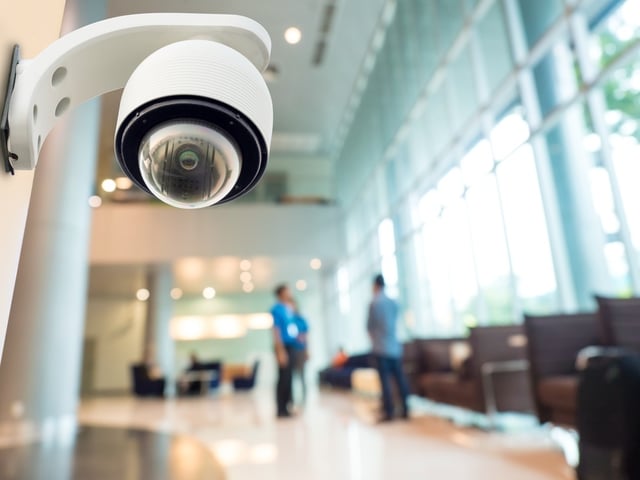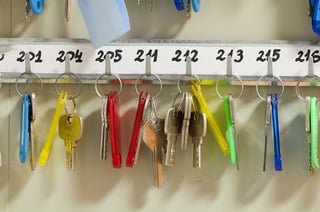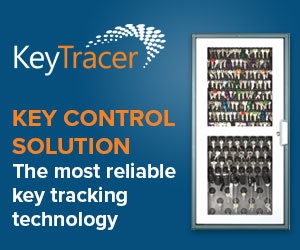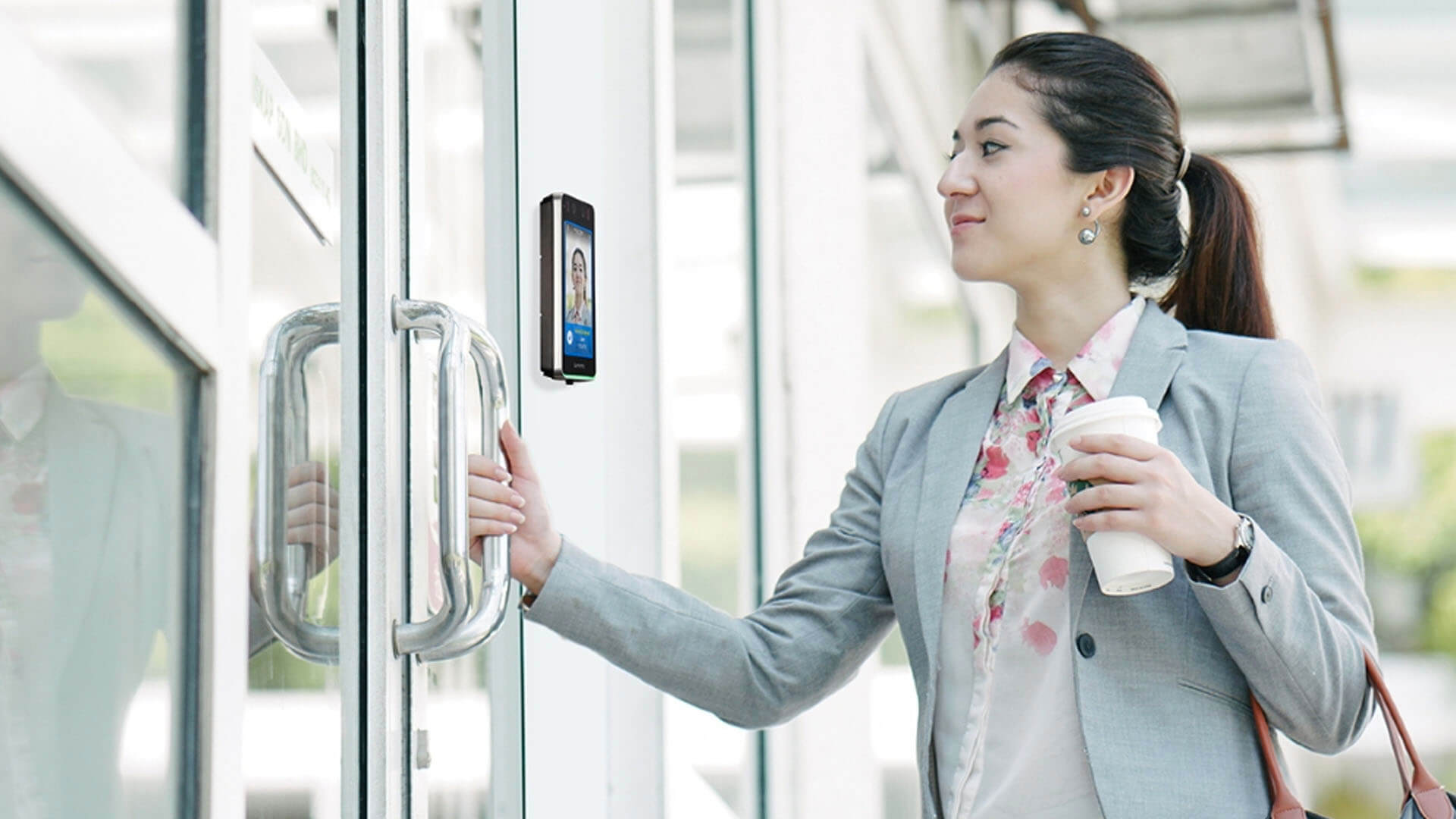By Jay Palter | July 25, 2017
Except for the more garish super villains, criminals avoid the spotlight. Most prefer to operate in theaters where they can remain in the shadows and maintain a level of control. Enter Crime Prevention Through Environmental Design (CPTED). CPTED is not a new sensor or camera. Rather, CPTED is a set of design principles intended to take the sense of anonymity and control away from the bad guys; and by doing so, make your facility a harder target. CPTED principles, when properly applied, allow you to anticipate the thought process of potential offenders and reduce the opportunity for crime.
The Four Principles of CPTED are Natural Access Control, Natural Surveillance, Territorial Reinforcement, and Maintenance. In the remainder of this post, we’ll briefly describe each and give you practical ideas for using them in your business.
Natural Access Control
Electronic Access Control (EAC) systems are designed to control the flow of traffic in and out of buildings and lots. No one should be able to enter an EAC protected area without some form of valid credential. Natural Access Control, by contrast, does not prevent anyone from entering your area; it just directs them to enter on your terms. A simple tension barrier, for example, can help take away a sense of control from an intruder as they approach a bank teller line or cash register. Here are some ideas for putting Natural Access Control to work for you:
- Use curbing, fencing, and landscape features to guide automobile and pedestrian traffic into controlled, visible areas. This will ensure that anyone wanting to sneak into an alternate entrance will become conspicuous by climbing over hedges or fence lines.
- Where appropriate, use tension barriers and maze entrances to interrupt straight line access to potential targets – especially bank tellers and cash registers.
- Restrict access to side and rear entrances with an EAC system and direct visitors into a main entrance with a reception desk or frequent employee traffic.
- And finally – while this tip overlaps with the principle of natural surveillance – greet all visitors if possible. This one policy change, when conscientiously applied, has been proven to reduce crime.
In summary, Natural Access Control means that you, not a potential offender, are in control of the traffic flow in your space.
Natural Surveillance
Open, well-lit spaces can deter crime, while isolated areas can encourage mischief by providing a cloak of anonymity. To avoid recognition, criminals will choose situations where they can hide and easily escape. So how do you keep your environments open to view? Here are a few tips:
- Eliminate hiding spots by trimming hedges, and removing trees, bushes, fences, dumpsters and other features that create blind spots.
- If you can’t remove some hiding spots – a commercial dumpster is one example – adjust your policies so that employees aren’t exiting into these areas after hours.
- Low, thorny hedges work well as a landscape feature around windows, because they don't obstruct the view in or out, and don't provide a comfortable place to hide. Trees and hedges that provide hiding spots – especially near building entrances – should be trimmed or removed.
- Any interior spaces that can be seen from the street – such as retail spaces behind a storefront window –should remain lit after hours. This allows law enforcement a better view of intruders from outside.
- Keep building exteriors open and well lit. Building entrances, in particular, should be bright and provide a clear line of sight from both inside and outside
- Use video cameras or 3600 door scopes to view areas without natural sight lines. You can also install public view monitors in lobbies and point of sale areas so that visitors know they are being watched. The last thing a criminal wants to see when they enter a building is their own face on a bright screen.

When someone with ill intent encounters a prudent use of natural surveillance, they should feel like they are being watched, and that there is no easy way to disappear from view.
Territorial Reinforcement
Territorial Reinforcement should create a clear distinction between public and private spaces. This is important for two reasons: Legitimate occupants have a sense of ownership and will notice - even challenge - people who don't belong; intruders, on the other hand, will have a harder time slipping in unnoticed.
Here are some basic examples of territorial reinforcement at work:
- Make sure receptionists or employees have clear sightlines to possible entrances.
- Give them the ability to quickly and discreetly call for help. A panic button that calls a central station or signals for help via an alarm light in a separate section of the building works well.
- Make sure security signage is clearly visible at all entrances. This includes notices that premises are under video surveillance.
- Implement a visitor management system. All visitors should be required to sign in to your facility, and no one should be able to roam your building without an escort.
- Assign a Floor Marshall: someone empowered to approach visitors in a given area of your facility and question them to make sure they belong. This policy can serve two purposes; it can be an effective way to identify intruders as well as a friendly way to ensure visitors get the attention and guidance they need.
As the principles of Territorial Reinforcement are implemented, employees and guests gain a sense of ownership, and intruders are put on the defensive.
Maintenance
Remember the old Granville House from It’s a Wonderful Life? George and Mary make their wishes and throw rocks at the windows to make sure they come true. And why would a wholesome couple perpetrate such brazen vandalism? Mostly because the other windows in the Granville House were already broken. It’s a great illustration of the CPTED Maintenance principle in action. Broken windows invite more broken windows.
A well -maintained area sends the message that people notice and care about what happens. This in turn discourages vandalism and other crimes. Security practitioners refer to the Broken Windows Theory; the idea that one broken window will entice vandals – or young lovers - to break another. A vandalized area then becomes more inviting to higher levels of crime. This principle is easy to apply. Property should be well-maintained as a matter of safety as well as pride. No one threw rocks at the Granville House after the Bailey’s moved in, now did they?
Target Hardening
While not one of the accepted CPTED, Target Hardening is often mentioned in conjunction with CPTED. Target Hardening simply means making a building or sensitive area more difficult to breach. Target Harding is often achieved by installing electronic and mechanical security devices. Here are a few examples:
- Key cabinets make it much more difficult to acquire keys to a restricted area. A key hanging in an unlocked – or poorly locked – cabinet can be quickly pocketed. To steal a key that has been properly stored in a KeyTracer cabinet, a perpetrator must first defeat layers of electronic and physical security.
- Asset lockers can be used to protect anything from an iPad to a pistol. A two-way radio left out in the open is more likely to grow legs than one stowed in heavy duty asset locker with electronic protection.
- Protective window films are another example of target hardening. Buildings with plate glass are vulnerable to "smash and grab" burglaries. But plate glass can stop a sledgehammer when a protective film has been professionally installed.
- Finally, deadbolts with a minimum 1” bolt should be used on exterior doors.
By adding layers of security that make your business harder to attack, you are encouraging criminals to victimize someone that hasn’t been quite so diligent.
Conclusion
CPTED principles have been steadily revised and applied since the 1970’s. While CPTED began as a way to defend entire communities, security practitioners have also adapted the practice to the commercial environment. Are you ready to apply CPTED to your space? Begin with a thorough walk through of your building and campus. Check for clear sightlines, notice the approaches to your property, and make sure your borders are well defined. Note any maintenance issues and resolve them before they attract vandalism or crime. For even more help, you can contact local law enforcement and arrange for a Community Resource or Crime Prevention Officer to survey your business and produce a formal CPTED review. Whichever approach you choose, begin today to use your environment to protect people and assets.

Jay Palter
Vice President of Marketing





